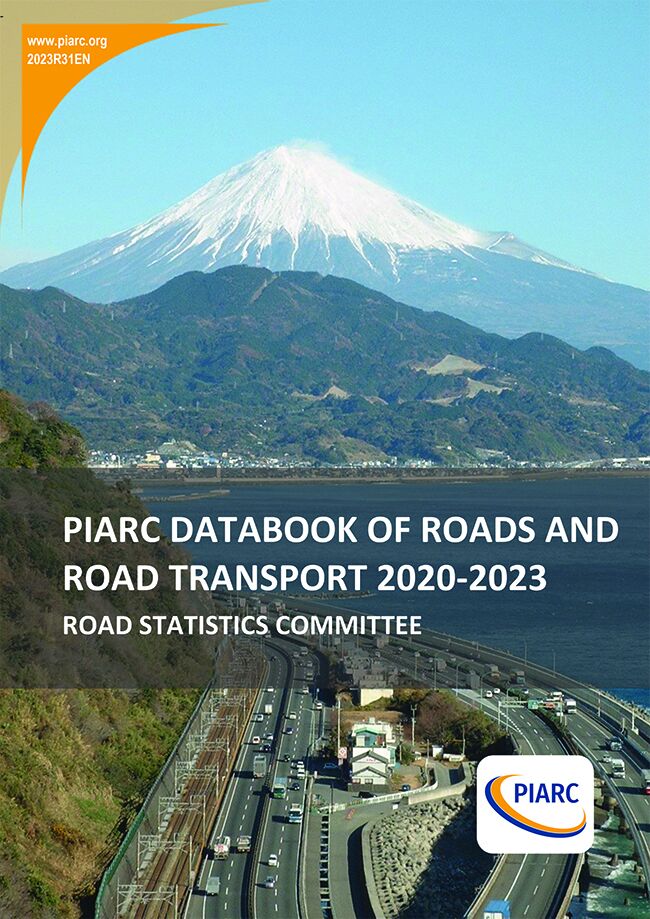PIARC DataBook of Road and Road Transport 2020-2023

Under the adverse circumstances of COVID-19 spreading across the world, many road administrations have to take further austerity measures while investing in construction of road network, maintaining/rehabilitating existing aged roads, ensuring increased traffic safety and so on. Then they are requested to adequately assess the importance of political measures to be taken and implement them effectively. Also, they should not fail to review the current situation of roads and road transport in an objective manner. Therefore, it is critical for road experts to collect and analyze the road statistics, in some cases, which should be internationally comparable so that we can accurately gauge the maturity level of our own countries’ roads and road transport in the international community.
In fact, however, it is not easy to collect various items of data related to roads and road transport which are internationally comparable with their accuracy and consistency ensured. Generally, each country has its own definitions regarding some sets of data which may be different from those of the other countries. In this case, it becomes necessary to closely examine the data with its definition and possibly correct/interpret it so that it can comply with the internationally reasonable standard of meaning. Anyway, it would be senseless to compare a certain piece of data with another one unless each definition were identical or reciprocally arranged in quality and condition.
In the overall context of the above and other cases this report has focused on the data definition with reliability which enables internationally meaningful comparison of data among 29 member countries including LMICs, and 10 items of data along 7 domains which seem to interest PIARC member countries are carefully selected and collected/examined to visualize how roads and road transport serve in their territories. Also, the result of the data synthesis of roads/road transport and some kinds of basic data is graphically represented and must be informative for PIARC members. For example, road length divided by square root of population multiplied by surface area, which is called academically Land Characteristics Index, can be suggestive and thought-provoking in terms of fair international comparison of more practical maturity level of road development among the member countries. The report addresses the qualitative indicator such as road policies of a country. Probably there have never existed any road statistics focusing on the data from that angle. The obtained and collected information about road policies is transformed into quantitative data and made comparable, which is also a breakthrough of our activities. Of course, we have managed to compile more comprehensive quantitative data in this report than that of the last version which was produced on a voluntary basis and released in 2019 while conducting a comparative analysis of some datasets examined by our survey. Interesting and key findings with analytical results relative to each indicator are given in detail in the chapter 6, and the overall summary of our work is presented in the chapter 7 as conclusions.
Although there is still room for improvement because our work has been done by only a small number of active Committee members, the report produced as “PIARC Databook of Roads and Road Transport 2020-2023” must be of great use, and hopefully it will be periodically prepared with more sophistication in a sustainable manner. In that sense, PIARC will make efforts to maintain Road Statistics Committee standing as well as cross-cutting in the following working cycles. Also our activities must be separated from the commercial objective, and the knowledge and intelligence we have gained from the past in terms of data examination and analytical skills should be carefully preserved without being easily incorporated into the other road statistics.
Information sheet
- Date: 2023
- Author(s): Comités transversaux / Cross-Cutting Committees / Comités transversales 2020-2023 Comité des statistiques routières / Road Statistics Committee / Comité de Estadísticas Viales
- Domain(s): General
- Type: 2023R31EN - PIARC DataBook of Road and Road Transport 2020-2023
- PIARC Ref.: 2023R31EN
- ISBN: 978-2-84060-808-0
- Number of pages: 64